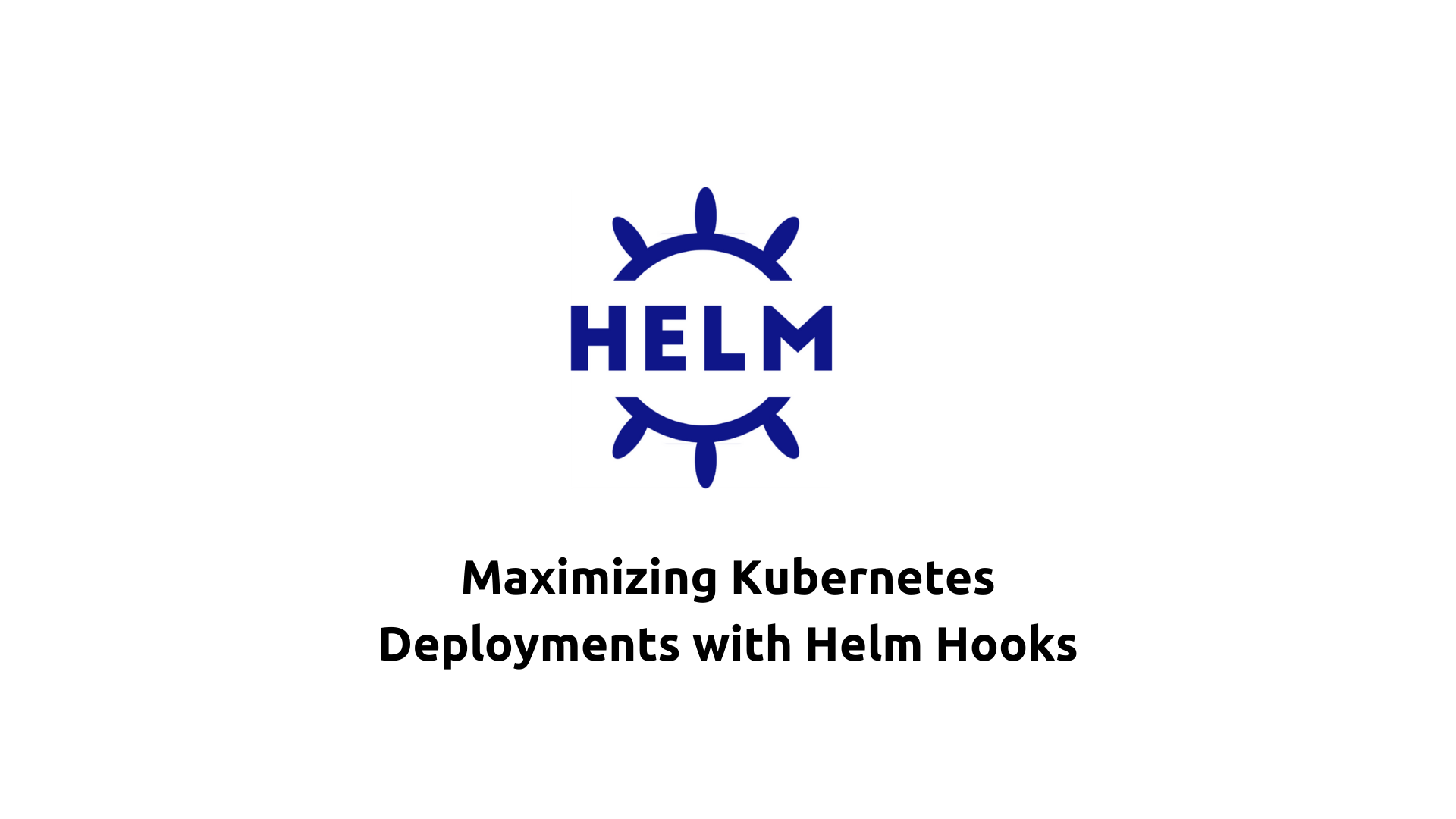Maximizing Kubernetes Deployments with Helm Hooks
 Saurabh Adhau
Saurabh Adhau
Introduction
In the dynamic landscape of Kubernetes deployment management, Helm stands out as a potent tool for simplifying application packaging and deployment. While Helm charts offer a streamlined approach to defining and managing resources, Helm hooks add an extra layer of flexibility by enabling users to execute custom actions at specific points during the deployment lifecycle. Let's explore Helm hooks through practical examples, leveraging Helm files, and understanding their utility in various deployment scenarios.
Understanding Helm Hooks
Helm hooks are special resources within a Helm chart that allow users to define actions to be executed at different stages of the deployment process. These stages include pre-installation, post-installation, pre-deletion, and post-deletion events, providing granular control over deployment tasks.
Example and Use Cases
1. Pre-installation Hook
Example: Execute database migrations before deploying the application.
Use Case: Suppose we have a Helm chart for deploying a web application that relies on a database. Before deploying the application, we want to ensure that database migrations are executed to update the schema.
Helm File (pre-installation hook):
# Chart.yaml
...
hooks:
pre-install:
- name: database-migration
job: |
kubectl apply -f database-migration.yaml
The database-migration.yaml file contains the Kubernetes resources required for database migrations.
2. Post-installation Hook
Example: Send a notification to Slack after a successful deployment.
Use Case: After successfully deploying the application, we want to notify the team via Slack.
Helm File (post-installation hook):
# Chart.yaml
...
hooks:
post-install:
- name: slack-notification
job: |
curl -X POST -H 'Content-type: application/json' \
--data '{"text":"Deployment successful!"}' \
https://slack.com/webhook
3. Pre-deletion Hook
Example: Take a backup of critical data before deleting resources.
Use Case: Before deleting resources, we want to take a backup of the database to prevent data loss.
Helm File (pre-deletion hook):
# Chart.yaml
...
hooks:
pre-delete:
- name: backup-database
job: |
kubectl exec database-pod -- sh -c 'pg_dump > /backup/db_backup.sql'
4. Post-deletion Hook
Example: Clean up resources after deletion.
Use Case: After deleting resources, we want to perform cleanup tasks to ensure a clean environment.
Helm File (post-deletion hook):
# Chart.yaml
...
hooks:
post-delete:
- name: cleanup-resources
job: |
kubectl delete pvc --selector=release={{ .Release.Name }}
Best Practices for Using Helm Hooks
Idempotency: Ensure that hooks are idempotent, allowing them to be safely run multiple times without causing unintended side effects.
Thorough Testing: Test hooks rigorously under various conditions to validate their behavior and detect potential issues.
Documentation: Document the purpose and behavior of each hook within Helm charts to provide clarity for users and facilitate troubleshooting.
Security Considerations: Be mindful of security implications when executing custom scripts within hooks and follow best practices for handling secrets and credentials.
Monitoring: Monitor hook execution during deployments to identify any issues or performance bottlenecks.
Conclusion
Helm hooks offer a powerful mechanism for enhancing Kubernetes deployments by enabling custom actions at specific lifecycle events. Through practical examples using Helm files, we've demonstrated how hooks can be leveraged to perform tasks such as database migrations, notifications, backups, and cleanup operations. By incorporating Helm hooks into Helm charts and following best practices, organizations can streamline their deployment workflows and achieve greater control and reliability in managing Kubernetes resources.
Subscribe to my newsletter
Read articles from Saurabh Adhau directly inside your inbox. Subscribe to the newsletter, and don't miss out.
Written by

Saurabh Adhau
Saurabh Adhau
As a DevOps Engineer, I thrive in the cloud and command a vast arsenal of tools and technologies: ☁️ AWS and Azure Cloud: Where the sky is the limit, I ensure applications soar. 🔨 DevOps Toolbelt: Git, GitHub, GitLab – I master them all for smooth development workflows. 🧱 Infrastructure as Code: Terraform and Ansible sculpt infrastructure like a masterpiece. 🐳 Containerization: With Docker, I package applications for effortless deployment. 🚀 Orchestration: Kubernetes conducts my application symphonies. 🌐 Web Servers: Nginx and Apache, my trusted gatekeepers of the web.